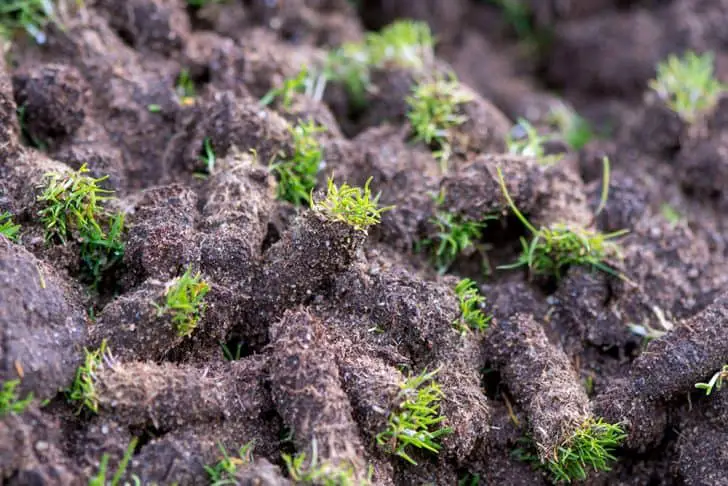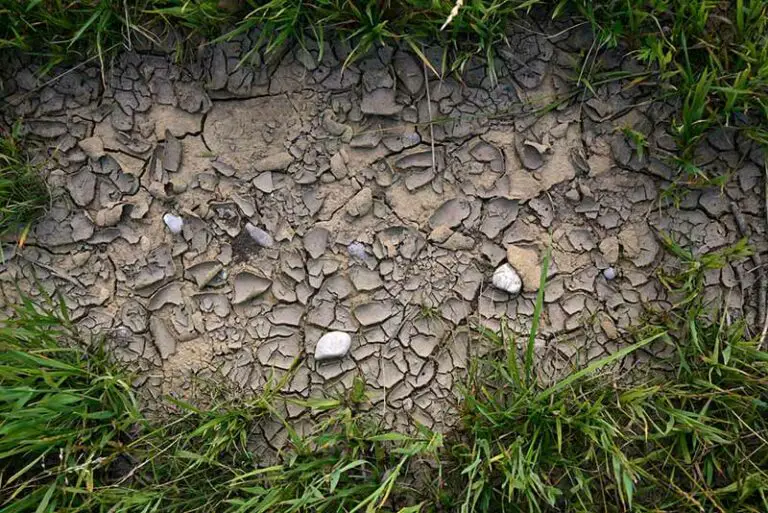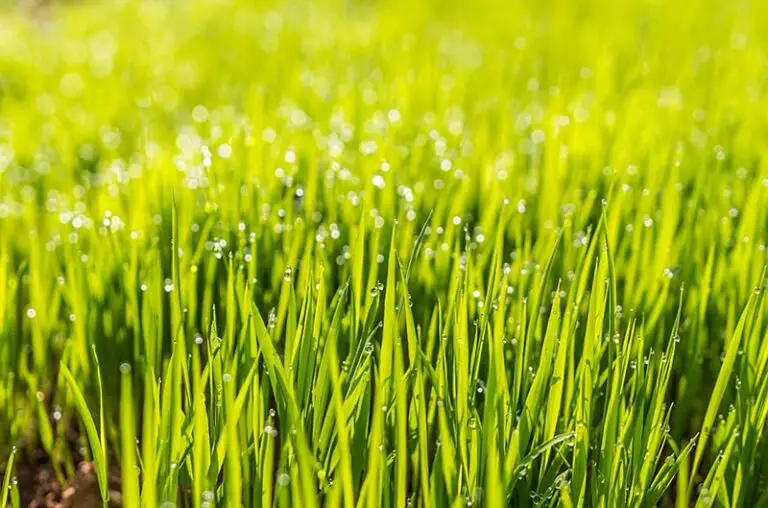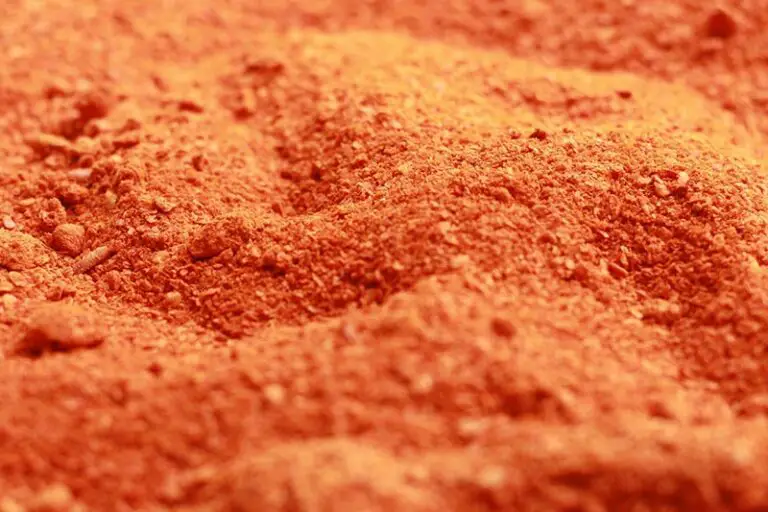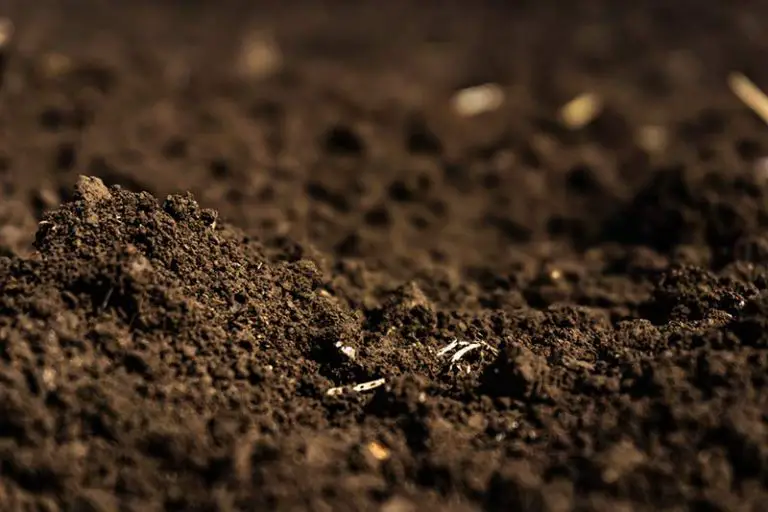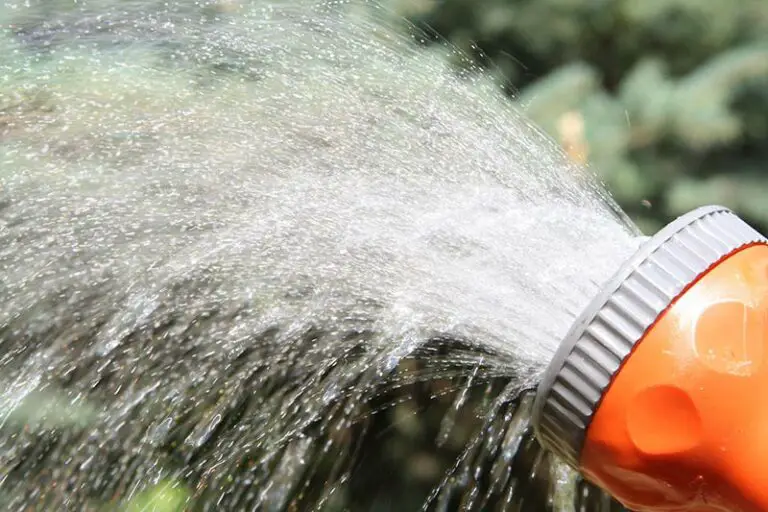Spotting Signs of Nitrogen Overload in Your Lawn
If present at optimal levels, nitrogen is one of the most beneficial nutrients for the grass plants on your lawn. It promotes the growth of strong, green foliage, and without it, your grass plants will seriously suffer. However, it is possible for your soil to contain more nitrogen than your grass plants need. If this is the case, you may start to notice some unpleasant symptoms that take over what would otherwise be a healthy thriving lawn.
The signs that you have too much nitrogen in your lawn include burnt grass, stripes or patches of discolored grass, thin or poorly growing grass, a low soil pH level, and an increase in weed growth.
In this guide, we explain the causes and signs of there being too much nitrogen on your lawn. We have also provided guidance on how to neutralize nitrogen levels and maintain them at an optimal level over time.
What Does Nitrogen Do for Grass?
In addition to phosphorus and potassium, nitrogen is one of the three most important nutrients for all plants, including grass. In grass, nitrogen is essential for the healthy growth of tall, green, strong grass blades. The grass is then able to use these healthy blades to most effectively photosynthesize and generate energy; in turn, this results in a lawn full of lush green grass with a strong root system that’s resistant to disease and weed growth.
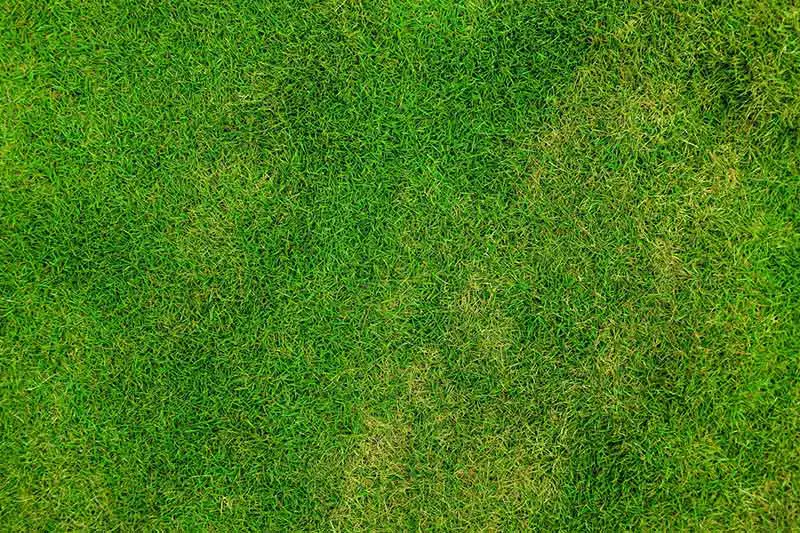
What Are the Signs of Too Much Nitrogen in Lawn?
The typical signs of having too much nitrogen in your lawn include burnt grass tips, stripes or patches of discolored grass, grass that’s thin and weak, having a low soil pH level, and/or an invasion of weeds.
Burnt Grass
The most common sign that your lawn is getting too much nitrogen is having burnt grass. When grass is overfertilized with nitrogen, the blades will begin to turn yellow or brown. The name given to this damage is ‘fertilizer burn’.
The damage starts at the tip of the blades and works its way down the rest of the grass plant; the reasoning for this is that the tips of the blades are more mature, so this is where the accumulation of nitrogen is at its highest concentration.
Stripes or Patches of Discoloration
The aforementioned damage from having too much nitrogen will often appear on your lawn as stripes or patches of discoloration. If your lawn appears mainly green with only small areas of discoloration, it’s likely that nitrogen isn’t the culprit.
However, if the discoloration is widespread, this is a sign that your lawn is getting too much nitrogen. The damage may appear in a quilt-like pattern, or the grass may be completely yellow or brown. As this type of damage is typically caused by overfertilization, the discoloration may appear in the pattern that you used when fertilizing the lawn.
Thin or Poorly Growing Grass
Another typical sign of having too much nitrogen in the lawn is having thin, weak, poorly growing grass. You may notice that your lawn is in much worse condition than your neighbors’ lawns for no apparent reason; if this is the case, it’s likely that your lawn is getting too much nitrogen.
Despite the fact that nitrogen is supposed to strengthen grass’ foliage and improve its growth, too much nitrogen has the opposite effect. The excess levels of nitrogen cause your grass plants’ foliage to grow too quickly for the roots to keep up. As the roots are unable to sustain the growth of the grass blades, the blades will begin to die off. This results in your lawn looking thin and unhealthy, sometimes to the point of scalping.
Low Soil pH Level
Having too much nitrogen in your lawn can cause the soil pH level to drop. All plants, including grass, have particular requirements for soil pH in order to see optimal growth. Grass plants typically require soils in the pH range of 6.5 to 7.0; when the soil pH drops below this number, i.e. it becomes too acidic, the grass plants will start to suffer.
Furthermore, highly acidic soils are usually low in magnesium and calcium, two other important nutrients for grass health. This reduces the availability and effectiveness of the other nutrients in your fertilizer and soil. As a note, your soil’s pH is an indicator of how much lime you should add to remedy nitrogen-based acidity.
Weed Growth
Another potential symptom of having too much nitrogen in your lawn is having a lawn full of weeds. Again, this is caused by the roots’ inability to keep up with the rapid growth of the grass blades. If the grass lacks a deep, healthy root system, the soil is susceptible to being taken over by weed growth.
You may notice an overgrowth of grassy weeds like crabgrass or nutsedge, or broadleaf weeds such as dandelion or spurge. Having too much nitrogen in your lawn is one of the most common causes of a weed invasion.
Why Does My Lawn Have Too Much Nitrogen?
It’s a near guarantee that the reason your lawn has too much nitrogen lies with the type of fertilizer you use and/or your method of fertilizer application. Additionally, problems with an excess of nitrogen may be exacerbated if you have animals that frequently urinate on your lawn.
Using Chemical Fertilizer
There are two main types of fertilizer that you can choose from, that being either a chemical or organic fertilizer. Organic fertilizers contain organically-occurring materials and work to fertilize the lawn as they break down naturally. They take a longer time to work than chemical fertilizers, however, they are much more gentle on your grass.
Chemical fertilizers are instead synthetic chemical mixtures of the same nutrients. They are formulated to be readily taken up by plants, often being labeled as water-soluble or quick-release. As this fertilizer works much more quickly to release its nutrients, it’s more likely to result in overfertilization and an excess of nitrogen in the soil.
Incorrectly Applying Fertilizer
Your lawn may be getting too much nitrogen in certain areas due to your method of fertilizer application. For fertilizer to be most beneficial for your lawn, it’s essential that you apply it in the right quantities at the right time. I.e., If you fertilize your lawn more than four times throughout the growing season with a nitrogen-rich fertilizer, you’re providing it with more nitrogen than it needs.
Also, different types of fertilizer come with different recommended rates of application. It’s crucial to check the label of your fertilizer to find out the manufacturer-recommended application rate and to set your spreader accordingly to avoid over-fertilizing. You should also follow the best method of fertilizer application to avoid over or under-fertilizing certain areas of your lawn.
Fertilizing an Area with Pet Urine
Your lawn may be suffering from too much nitrogen if you’re a pet owner and your pet frequents your lawn. Animal urine, especially that of female dogs, is high in nitrogen and ammonia. On their own, the concentration of these compounds in animal urine can damage your lawn; this problem is only worsened with the addition of more of the compounds from a nitrogen-rich fertilizer.
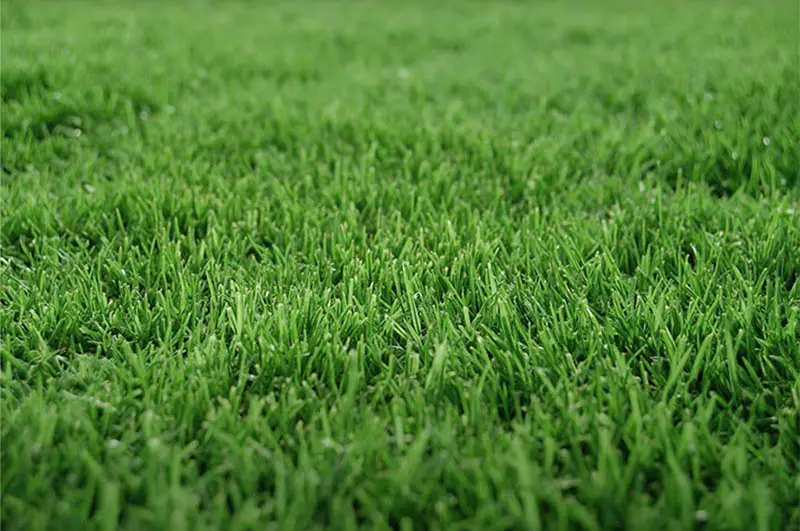
How to Neutralize Nitrogen Levels in Lawn
Before you can put in any long-term measures to lower the nitrogen levels in your lawn, you will first need to neutralize the excess nitrogen it currently contains. Nitrogen bonds strongly with soils, so you’ll need to break this bond before you’ll see any improvement. You can do this using one or multiple of the following methods.
1. Flush Soil with Water
Soil flushing is the process of moving particles such as nitrogen around your lawn using a high-pressure flow of water. This helps to reduce excessive amounts or concentrations of nitrogen from your soil.
You can either contact a professional landscaping company to carry this out for you or carry it out yourself. To carry it out yourself, you’ll need to rent a soil flusher from your local home and garden store. For this method to be effective, it’s necessary to run the water with a significant amount of force. If you’re inexperienced with this process, it may be best to leave it to the professionals to carry out.
2. Add Sugar to Soil
It’s possible to lower nitrogen levels in your soil organically by adding sugar to it. Sugar works to lower nitrogen levels as it contains carbon; carbon is an element that attracts, bonds with, and holds nitrogen. Some studies reveal that sugar can effectively lower nitrogen levels in soil due to this carbon content. In addition to this benefit, sugar also has the ability to control weed growth.
Dissolve some sugar into water at a ratio of ½ cup of sugar per gallon of water, and apply the mixture evenly across your lawn. Take note that you will have to repeat this process regularly to fully neutralize the nitrogen levels in your lawn.
3. Add Agricultural Lime to Soil
Another amendment that can lower nitrogen levels in your lawn is agricultural lime. Lime is a common lawn amendment used primarily to raise the pH level of soil, i.e. make the soil more alkaline. As we know, highly acidic soils cause problems for grass plants, and can exacerbate the effects of having too much nitrogen in the soil.
Apply the agricultural lime to your soil using a rotary spreader. The amount of lime you add depends on the soil’s current pH level, as revealed by a soil test. To give you a general idea, one 40 lb bag of lime should cover approximately 1000 sq feet of lawn.
How to Lower Nitrogen Levels in Lawn Over Time
There are several methods you can utilize to lower and maintain the nitrogen in your lawn at an optimal level. These include adding compost, mulch, or sawdust to your soil, growing nitrogen-fixing plants, and replacing sandy or permeable soils. You should also avoid using nitrogen-rich amendments unnecessarily.
Avoid High-Nitrogen Amendments
The most obvious tip to prevent adding too much nitrogen to your lawn is to avoid any amendments that contain high amounts of nitrogen. This includes fertilizers and herbicides, and any other type of treatment that states it contains additional nitrogen. As we’ve explained, products containing high amounts of nitrogen cause excessive foliage growth that the roots are unable to keep up with.
Before using any type of fertilizer on your lawn, always check the NPK value on the packaging of your product. This is a numerical value that tells you how much of each primary nutrient is present in the fertilizer. The NPK value is represented by three numbers, e.g. 10-10-10; each number represents how much nitrogen (N), phosphorus (P), and potassium (K) is in the fertilizer respectively. Also, always test your soil before fertilizing to make sure you’re using the best fertilizer for your lawn’s specific needs.
Add Compost to Lawn
In place of using a chemical fertilizer, try fertilizing your lawn using compost. As compost is made entirely of organic matter, it takes longer to break down, and is much more gentle on your grass. The compost will take nitrogen from the soil throughout its decomposition process, gradually releasing it back as it breaks down. This will keep your lawn fertilized with a steady stream of nutrients, including nitrogen, for a much longer time than if you use a chemical fertilizer.
Add Mulch to Lawn
A layer of organic mulch can help to lower nitrogen levels in your lawn. It does so by helping the soil to retain moisture and minimizing the amount of nitrogen lost to leaching. Beyond this, mulch brings a number of other benefits for your grass; it helps to maintain consistent soil temperatures and suppresses the spread of weeds and soil-borne diseases.
Add a layer of organic mulch to your lawn, at a thickness of about one to two inches. There are a range of organic materials you can use as mulch, including leaves, grass clippings, and straw.
Add Sawdust to Soil
Sawdust is another excellent organic amendment for soil that can help to maintain the nitrogen levels in your lawn. On top of this, sawdust promotes your soil to have better drainage and to be in a better condition overall.
Sawdust contains carbon, an element that can tie up nitrogen compounds for an extended period of time after application. This will help to keep nitrogen levels low in your soil long after you apply the sawdust. On that note, any organic amendment like sawdust that contains high levels of carbon will work to lower nitrogen levels in this way.
Grow Nitrogen-Fixing Plants
Nitrogen-fixing plants are certain crops that can help maintain the levels of nitrogen in the soil in which they’re growing. With that said, it isn’t the plants that carry out this job, but a bacteria called Rhizobium found on the plants’ roots. This bacteria is able to draw nitrogen in from the air and convert it into a form that it can use for its growth; when the bacteria is done with this nitrogen, the rest then becomes available to the surrounding grass or plants.
Examples of good nitrogen-fixing plants include tomatoes, peppers, alfalfa, and beans. Another excellent nitrogen-fixing plant that you can grow alongside your grass is clever; a lot of homeowners opt to get rid of clover, as it is often seen as a weed. However, there are many benefits of planting clover on your lawn, including this nitrogen-fixing ability that it has.
Replace Permeable Soil
Highly permeable or porous soils, such as sandy soils, are more prone to leaching and nitrogen loss from excess applications. Adding too much nitrogen to this type of soil can cause damage to both your lawn and the local environment. If possible, consider replacing the soil in your lawn with better quality, impermeable topsoil.

